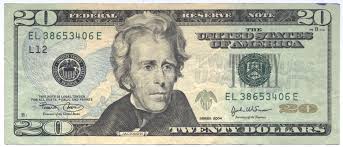2015: Time for Women to get Top Billing
A third grader wrote a letter to President Obama last year, asking him to put more women on U.S. currency. While that may not seem like major news, Obama later mentioned 9-year-old Sophia’s letter in an interview, in which he said that honoring more women on bills and coins would be a “pretty good idea.” Sophia’s letter, and President Obama’s
words then subsequently inspired the creation of the “Women on 20s” campaign, which has been gathering votes on their website in order to choose which woman to honor. The group intends to petition Obama and the Secretary of the Treasury, Jack Lew, in order to realize its goal. Currently, the finalists are Eleanor Roosevelt, Harriet Tubman, Rosa Parks, and Cherokee Chief Wilma Mankiller.
On the Women on 20s campaign’s website, there is a quote by Gloria Steinem that reads, “Women have always been an equal part of the past. They just haven’t been part of history.” Although men have historically dominated political offices, women and minorities significantly shaped U.S. history and politics. We recognize John Adams and John Quincy Adams as the second and sixth president respectively, yet we fail to adequately recognize the great intellectual ideas of Abigail Adams and the influence she had on her husband and son. In our history classes, we learn all about our nation’s 44 male presidents, but spend too little time studying the work and impact of brave women like Frances Perkins, who not only ran for president before women’s suffrage, but also established the first minimum wage and overtime laws under the Fair Labor Standards Act.
Although some may bark at the idea of “breaking tradition” by altering the design of U.S. currency, we need to acknowledge the vast number of individuals deserving such recognition, a group certainly not limited to white men. The list of individuals who are honored on U.S. currency should reflect the diversity of all who instituted positive political change throughout American history.
Whether or not Andrew Jackson, the current face of the $20 bill, is deserving of being honored is irrelevant for the purpose of determining whether a woman should take his place. Jackson, the seventh President of the United States, helped found the state of Tennessee. He was also slave-owner who signed the Indian Removal Act, ignored the Supreme Court’s decision in Cherokee Nation v. Georgia, and forced the Cherokee Nation to migrate from it’s homeland east of the Mississippi River to present-day Oklahoma. This journey, known as the “Trail of Tears” because thousands of relocated Cherokee contracted diseases and died, is certainly not something that should, or likely ever will, be forgotten as time moves forward.
Jackson was put on the $20 bill even after committing some actions that we now would likely deem reason for impeachment. Thus, there is no good reason to always keep the lineup of historical figures featured on U.S. currency the same, with so many influential and admirable individuals deserving the honor, and there is definitely no reason why a woman should be kept from the honor.
The really difficult question isn’t whether to honor a woman on the $20 bill, but rather which woman to honor. Eleanor Roosevelt, Harriet Tubman, Rosa Parks, and Cherokee Chief Wilma Mankiller should all be recognized on U.S. currency sometime in the future. However, one might argue that Harriet Tubman’s recognition is most overdue. Tubman, who escaped slavery, rescued approximately 70 slaves through the Underground Railroad and later advocated for woman’s suffrage. She was an incredibly brave women whose portrait we should all feel proud to keep in our wallets.
By featuring more important female figures on U.S. currency, as well as valiant minority men like Fredrick Douglas and Dr. Martin Luther King Jr., we can see a more inclusive reflection of our history and instill in our children appreciation for the diverse array of national heroes.

